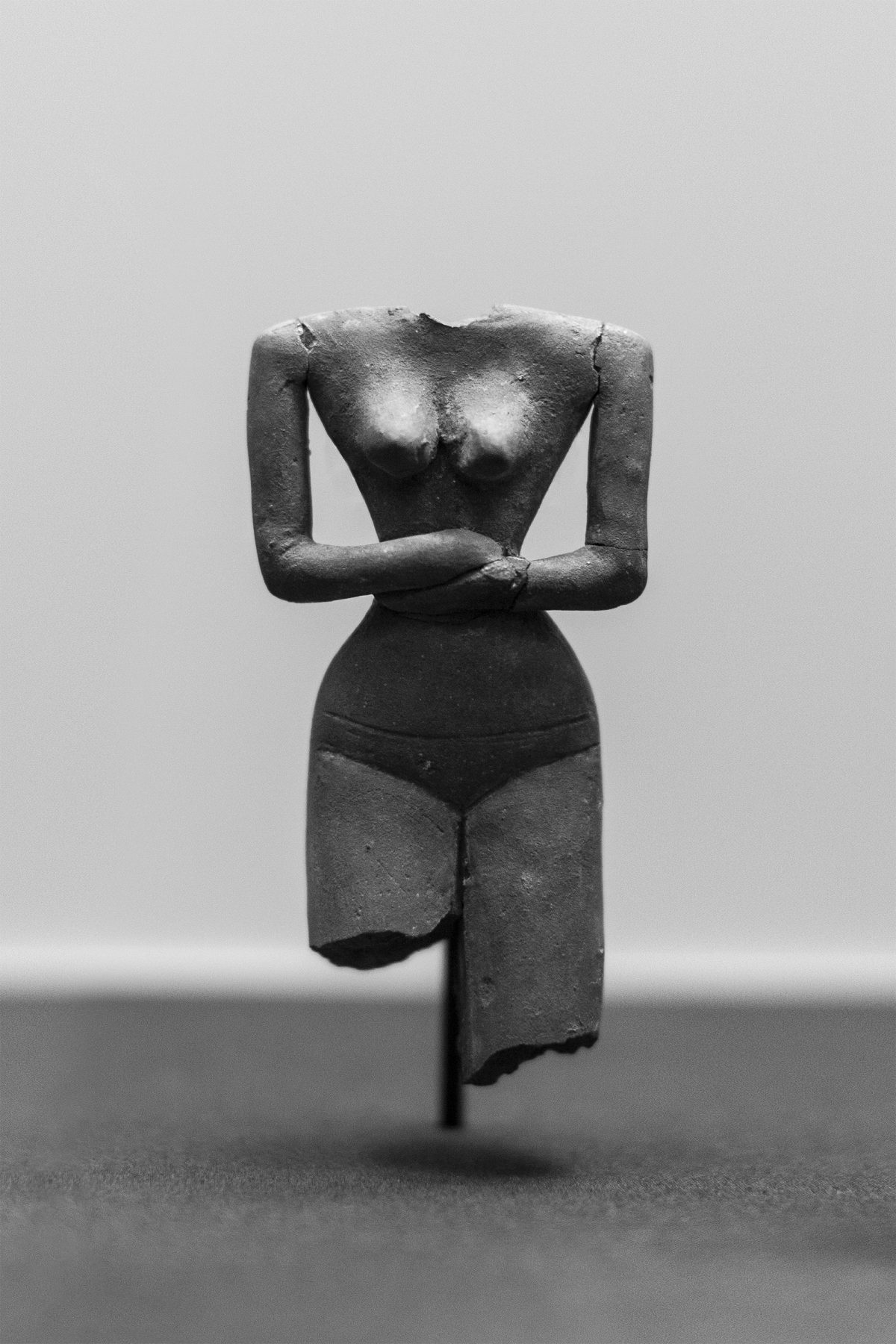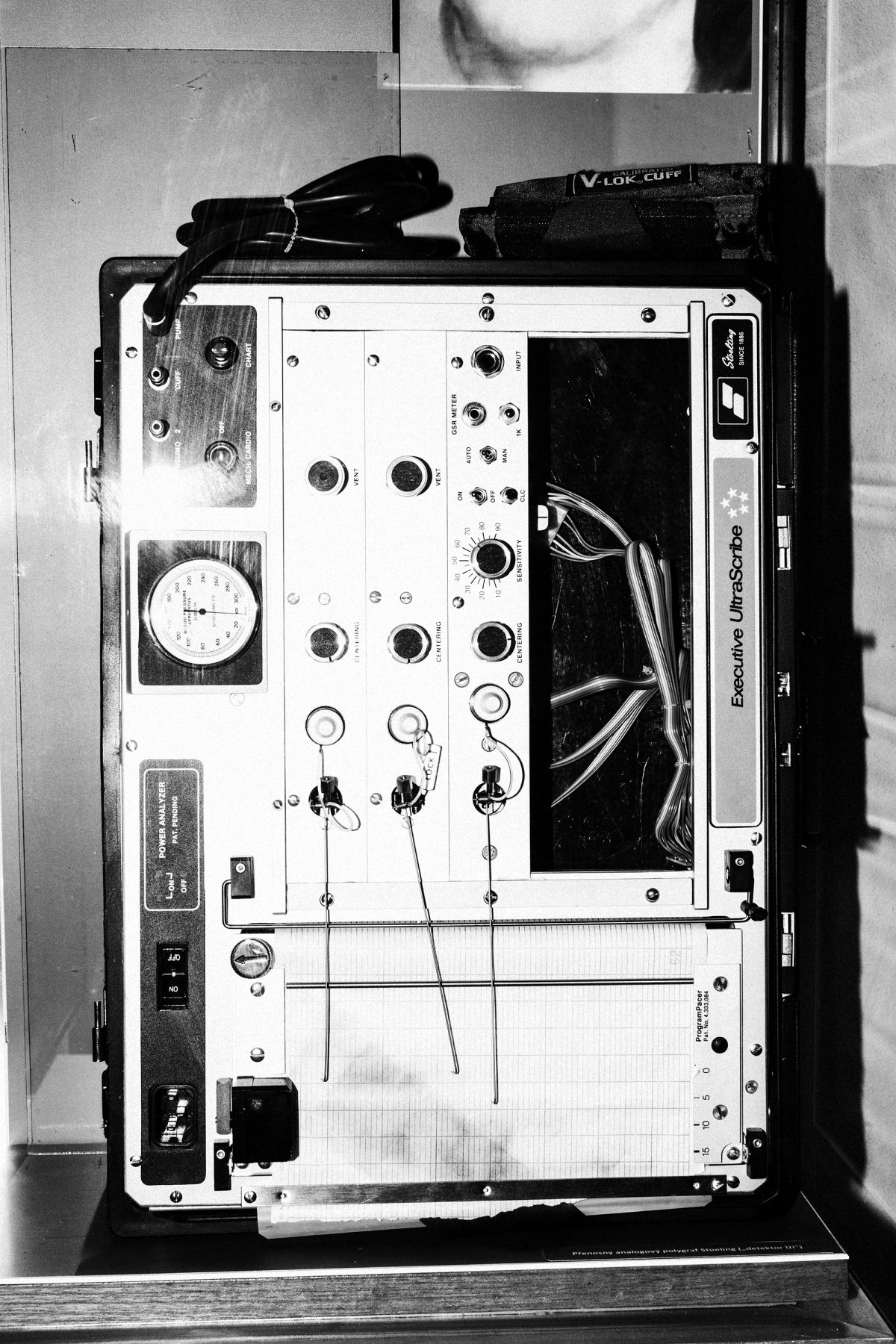Written by Fiona Rogers
Throughout her career, Catalonian photographer Laia Abril has been visualising the unimaginable and creating one of the most important records of our time; a photographic history of misogyny and its ongoing impact on the lives of women and girls.
In her powerful three-part exploration entitled A History of Misogyny, Abril interrogates some of the most fundamental and important manifestations of women’s rights and women’s healthcare, including abortion access, rape culture and the stigma of hysteria and female mental health. In her approach, she frames these issues not as a contemporary horror story, but as something as old as time itself. Historic injustices perpetuated by society, politics, ideology, and systemic failures by the institutions created to protect us.

Gendered violence exists in many forms and Abril has looked at them all. Attacks from strangers in the street. The ‘quiet’ anger of domestic abuse. Casual micro-aggressions experienced in the workplace and violations of privacy on the internet. Abril examines the perpetrators of this violence, such as the infamous ‘Wolf Pack’; a group of five men who, in northern Spain in 2016, gang raped a young woman and videoed the act. They were initially sentenced on a lesser charge of sexual abuse, due to a ‘lack of evidence of violence’. The case, and the women’s subsequent public shaming, were the backdrop to the largest feminist protests in the country’s history, and the start of Abril’s second chapter in A History of Misogyny: On Rape and Institutional Failure.
Abril’s definition of perpetrator is purposefully wide, and in her research she looks not just at the individuals, but also at institutional culpability and how varied forms of control such as withholding abortion care, access to education and ineffectual justice systems, create subsequent and long-lasting impact on not just the survivors, but on wider society.
With seismic shifts occurring to the rights of women internationally, it seems relevant we look to the art and activism of individuals such as Abril. Recent events, including the murders of Mahsa Amini, Sarina Esmailzade and Nika Shakarani in Iran and the US Supreme Court’s overturning of Roe v. Wade, suggests a strengthening of power structures which have traditionally sought to control women’s bodies with a political agenda, and visa versa.

In Chapter One: On Abortion and the repercussions of lack of access (2018), Abril adopted a rigorous research method merging historic documents, objects and data with unflinching personal testimonies and portraits to create a powerful statement about the right to freedom of choice and access to healthcare. In On Rape and Institutional Failure, Abril employs the same rigour to examining the origins of gender-based violence. Her record seeks to hold institutions accountable and importantly, disrupt the victim-shaming narrative. In calling out the injustices and societal stereotypes which enable and encourage violence against women, Abril subverts the damaging perception of the blame and shame game. In this space, women can reclaim their bodies, and therefore their agency.
Gendered violence, and in particular, rape, forms an uncomfortable part of the canon of art history. The abuse of models in workshops and studios is well known, as is the reduction of women’s artistic roles to simply that of the ‘muse’. Writers such as Ovid and Homer imbued their literature with sexual violence. The Ancient Greeks, Romans, and post-Renaissance painters depicted rape alongside war and conquest, coining these narratives with the term ‘heroic rape’ which glorified, sterilised, and aestheticised sexual violence. The romanticisation of these ‘victories’ are captured in powerful works such as Titian’s infamous 1562 painting, Rape of Europa, or Flemish sculptor and architect Giambologna’s marble sculpture The Rape of the Sabine Women. In contrast, Abril’s research-led approach rejects the notion of aestheticised rape and presents it as the violent and sordid act it is.
How, who and what we remember, is important. So too, is the language we use to define violence and it’s ‘victims’. Some argue that in ancient Rome, the word for rape translates more accurately to ‘raptus’ meaning “carrying off by force”. This manifests in art history, where the two words appear interchangeable. Rape becomes ‘abduction’, Nicolas Poussin’s 1633 painting is recast with a more sanitised title, ‘The Abduction of the Sabine Women’ and a horrific crime is reduced and repositioned as a crime of theft to property – an affront to a women’s husband or father more than the victim herself. In Abril’s new book, the curator and art critic Marta Gili writes about Christian van Couwenbergh’s 1632 painting the Scène de moeurs, known as The Abduction of the Negress, which features the gang rape of a Black women, and is held in the Colección Museé du Palais de Rohan in Strasbourg. Gili describes the museum’s role in representing such a difficult artwork, and the choice of interpretive language. She states, ‘Despite undoubtedly good intentions, this institutional text normalises, with its condescension and the imperfection of its observations, two abuses that bring together colonialism and patriarchy: in this case, the collective rape of a body, for being a woman and for being black.’

Allegorical perpetrators are often exonerated in favour of a narrative which suggests patriotism, strategic unions, or collateral damage. Artistic renders of the Rape of the Sabine Women are often defended in this way, as the portrayal of a significant moment in the foundation of Roman history. Rape by a god which results in a pregnancy creates a ‘hero’ child. This horrific act; of sexual violence, abduction and forced marriage, is reframed as the creation of new families, and ensuring the Empire’s survival. It has been glorified in stone and painted by some of the world’s greatest artists. Botticelli’s Allegory of Spring depicts, amongst other things, the rape of Chloris by Zephyr the Wind God, whom she later marries. It is suggested that the piece was commissioned to commemorate the marriage of Lorenzo di Pierfrancesco de’ Medici to Semeramide d’Appiani in 1482; a thoughtful wedding gift which served to remind brides of their subservient position and marital duties. In contemporary society these acts have a different name: ‘honour marriage’. The so-called ‘marry your rapist’ law still exists in over 20 countries, including Russia, Thailand and Venezuela. In over 30 countries, marital rape is still legal.
This subversion of perpetrator behaviour and their complicit parties reinforces the lack of agency and control that survivors and victims of sexual violence often possess. Most people will know of infamous murderer Jack the Ripper and his 19th century exploits, but what of the women? Nichols, Chapman, Stride, Eddowes and Kelly? Their narratives of mothers, sisters, workers, friends, and lovers have been largely forgotten and replaced with the scandalous, the sensational and the uncontrolled. In the 2019 publication ‘The Five: The Untold Lives of the Women Killed by Jack the Ripper’ British historian Hallie Rubenhold attempts to unpick at this canonical story, calling time on the historic misogyny that has fed the Ripper mythology. Rubenhold provides a fuller, more nuanced illustration of the women and their complicated lives under a difficult, patriarchal Victorian Britain. Her desire to reclaim the victim narrative on behalf of these women is mirrored in Abril’s ambition to do the same for survivors of rape. Her visualisation and documentation of institutional failings, from the criminal justice system to religious groups, the media and healthcare organisations, is key to reframing a woman’s story and pivoting a culture of blame and shame.
Some art historians muse that victims of mythological rape do not appear to suffer serious consequence. Many of these ‘abductions’ result in marriage, so how bad can they be? Few historical artworks depict an actual act of sex or violence, though it is clear from the gestures of the women – flailing arms, contorted faces – that consent is not forthcoming. In Abril’s research, consent (or rather, a lack of), is a reoccurring theme, as is the complexity around its definition. The perceived ‘access’ to women’s bodies is so deep rooted that when we are presented with Abril’s testimonies from some of the world’s most powerful men, we are simultaneously shocked and unsurprised. ‘When rape is inevitable, lie down and enjoy it’ advised Ramesh Kumar, Indian Congress Leader, in 2022.
The dynamics of power, and the often-problematic relationship between artist and ‘subject’ is well represented in the celebrated art of Paul Gauguin. His commodification of the women of Polynesia embodies the intertwining of gender, power, and race, for the most vulnerable often exist within marginalised communities. Gauguin is not alone in representing the dichotomy of art, genius, and power. Edgar Degas was an infamous (and celibate) misogynist. Andy Warhol was famously shot by one of his ‘collaborators’, Valerie Solanas, after her mistreatment and in her belief that Warhol was attempting to plagiarise her writing. Following the #MeToo and #TimesUp movements, the American writer Claire Dederer wrote a fascinating article for The Paris Review entitled What Do We Do with the Art of Monstrous Men? In it, she examines the lauded works of Roman Polanski, Woody Allen, Richard Wagner, Sid Vicious, Pablo Picasso, Max Ernst, Lead Belly, Miles Davis, Phil Spector and more, stating ‘They did or said something awful, and made something great,’ and questions if we can ever separate the art from the monster. And by ‘we’, she means us. Me. Can I distinguish the two. Should we distinguish between the two?
Perhaps the answer is not the cancellation or erasure of problematic art, but the contextualisation or recontextualiaation of it. In presenting a fuller, more nuanced story, we can better understand and empathise with other lived experiences that are different from our own.

